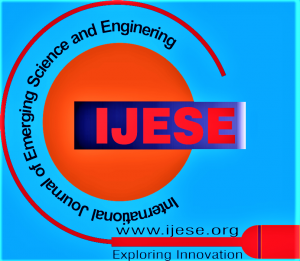![]()
Quantum–Classical Synergies in Topology Optimization for 3D-Printed UHPC Bridge Structures: A Critical Review of Computational Paradigms, Sustainability Metrics, and Scalability Barriers
Girmay Mengesha Azanaw
Girmay Mengesha Azanaw, Lecturer, Department of Civil Engineering, Institute of Technology, University of Gondar, Gondar, Ethiopia.
Manuscript received on 22 May 2025 | First Revised Manuscript received on 29 May 2025 | Second Revised Manuscript received on 04 June 2025 | Manuscript Accepted on 15 June 2025 | Manuscript published on 30 June 2025 | PP: 15-23 | Volume-13 Issue-7, June 2025 | Retrieval Number: 100.1/ijese.G260613070625 | DOI: 10.35940/ijese.G2606.13070625
Open Access | Editorial and Publishing Policies | Cite | Zenodo | OJS | Indexing and Abstracting
© The Authors. Blue Eyes Intelligence Engineering and Sciences Publication (BEIESP). This is an open access article under the CC-BY-NC-ND license (http://creativecommons.org/licenses/by-nc-nd/4.0/)
Abstract: Recent advances in quantum computing, combined with classical algorithms, are reshaping how engineers approach topology optimization (TO), particularly in the context of 3Dprinted ultra-high-performance concrete (UHPC) bridge structures. This review critically examines how hybrid quantum– classical methods are influencing structural design workflows, with a focus on theoretical frameworks, computational strategies, sustainability metrics, and practical scalability. Drawing on a wide range of current academic literature and case-based studies, the paper assesses how quantum approaches, such as the Quantum Approximate Optimisation Algorithm (QAOA) and Variational Quantum Eigensolver (VQE), may overcome the challenges posed by complex design spaces and nonlinear behaviours commonly encountered in TO problems. The analysis also highlights the role of machine learning in complementing quantum algorithms, particularly for tasks such as surrogate modelling, performance prediction, and real-time optimisation feedback. Sustainability assessments further reveal that these hybrid approaches can contribute to substantial reductions in material consumption, embodied carbon, and construction waste, particularly when combined with additive manufacturing processes that accommodate irregular or efficiency-driven geometries. Despite these promising developments, the review identifies several limitations that require attention. These include the technical constraints of current quantum devices, gaps in standardised computational frameworks, and issues related to scaling optimized forms for real-world fabrication. In response, the study outlines future research directions, including the development of open-source platforms, cross-disciplinary collaboration, and physical validation of optimised UHPC components. By integrating insights from quantum computing, structural engineering, and digital fabrication, this review presents a comprehensive and realistic perspective on the opportunities and challenges associated with quantum–classical synergy in sustainable bridge design. It emphasises the need for thoughtful, collaborative innovation to realise the potential of these cutting-edge technologies fully.
Keywords: Quantum Topology Optimization, 3D-Printed UHPC Bridges, Sustainability in Structural Design, Hybrid Quantum-Classical Algorithms, and Additive Manufacturing in Civil Engineering.
Scope of the Article: Civil Engineering and Applications
